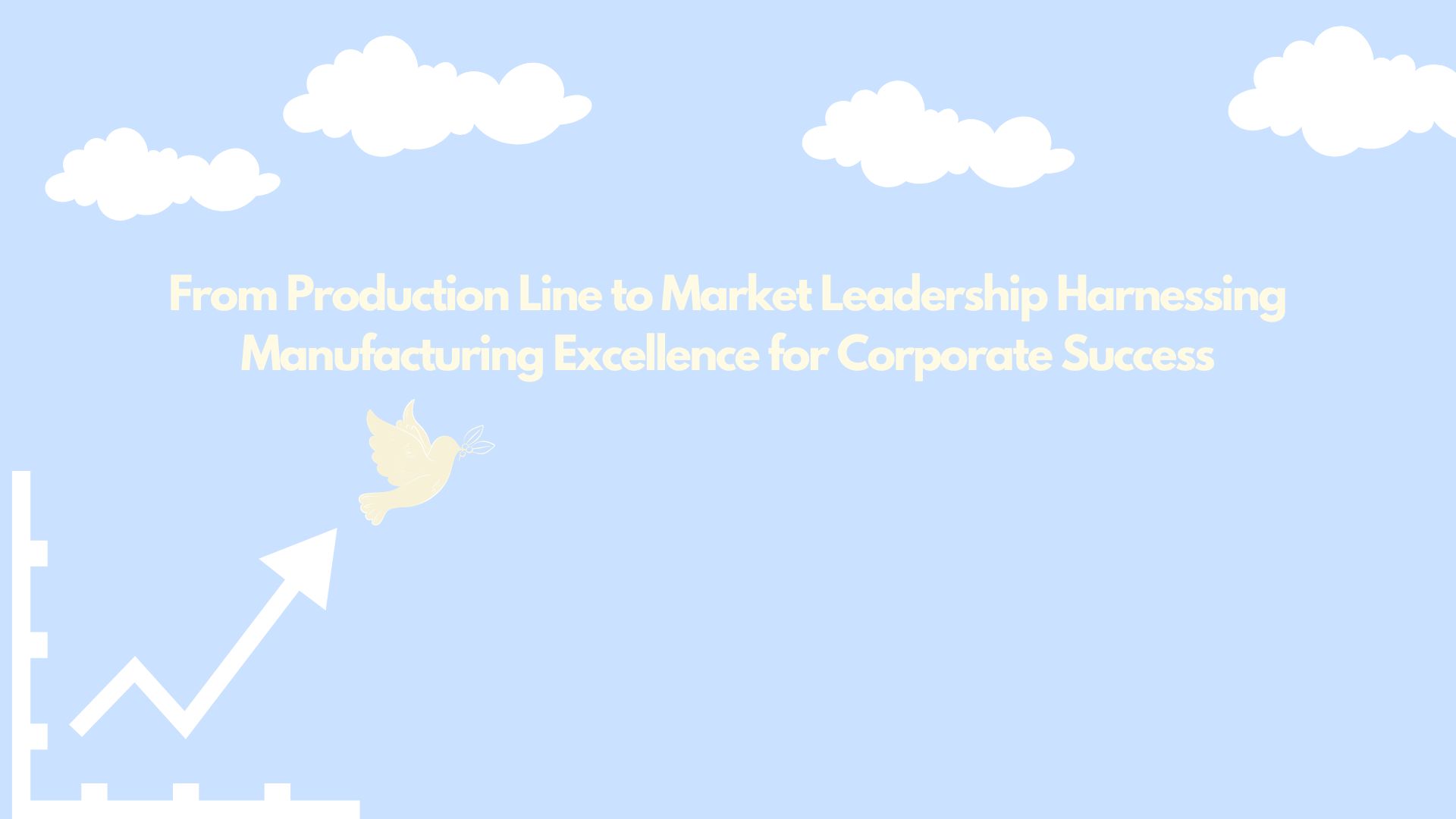In today’s competitive business environment, the journey from production line to market leadership requires more than just operational efficiency. It demands a strategic approach that seamlessly integrates manufacturing excellence with corporate success. This blog explores the key elements that businesses need to focus on to harness their manufacturing prowess and transform it into market leadership.
1. Understanding Manufacturing Excellence
Manufacturing excellence goes beyond simply producing goods. It encompasses a holistic approach that includes:
- Lean Manufacturing: Streamlining processes to eliminate waste and improve efficiency.
- Quality Control: Implementing rigorous standards to ensure product consistency and reliability.
- Innovation: Investing in new technologies and methods to stay ahead of the competition.
- Employee Engagement: Cultivating a workforce that is skilled, motivated, and committed to continuous improvement.
2. Aligning Manufacturing with Corporate Strategy
For manufacturing excellence to contribute to corporate success, it must be aligned with the overall business strategy. This involves:
- Strategic Planning: Ensuring that manufacturing goals support the company’s long-term objectives.
- Integrated Supply Chain Management: Collaborating with suppliers and partners to optimize the entire value chain.
- Market Demand Analysis: Producing what the market needs, when it needs it, to maximize profitability and customer satisfaction.
3. Leveraging Technology for Competitive Advantage
Technology plays a crucial role in transforming manufacturing capabilities into market leadership. Key technologies include:
- Automation and Robotics: Enhancing production speed and precision while reducing labor costs.
- Data Analytics: Using big data to make informed decisions, predict trends, and improve operational efficiency.
- IoT (Internet of Things): Connecting machines and devices to streamline operations and provide real-time insights.
- AI and Machine Learning: Driving innovation through advanced analytics and predictive maintenance.
4. Enhancing Product Innovation and Customization
To stand out in the market, companies must continuously innovate and offer customized solutions. Strategies include:
- R&D Investment: Allocating resources to research and development to create cutting-edge products.
- Customer Feedback Integration: Using customer insights to drive product improvements and innovations.
- Agile Manufacturing: Adopting flexible production methods that allow for rapid adaptation to market changes and customization requests.
5. Building a Resilient and Responsive Supply Chain
A resilient and responsive supply chain is critical to ensuring that manufacturing excellence translates into market success. Key components are:
- Risk Management: Identifying potential disruptions and developing contingency plans.
- Supplier Collaboration: Building strong relationships with suppliers to ensure quality and reliability.
- Inventory Optimization: Balancing inventory levels to meet demand without overstocking or understocking.
6. Fostering a Culture of Continuous Improvement
A culture of continuous improvement is essential for sustaining manufacturing excellence and driving corporate success. This involves:
- Kaizen Philosophy: Encouraging incremental improvements in all aspects of the business.
- Employee Training and Development: Investing in the growth and development of employees to enhance their skills and capabilities.
- Performance Metrics: Implementing key performance indicators (KPIs) to track progress and identify areas for improvement.
7. Conclusion
From the production line to market leadership, the journey requires a strategic approach that integrates manufacturing excellence with corporate success. By understanding the key elements of manufacturing excellence, aligning it with corporate strategy, leveraging technology, enhancing product innovation, building a resilient supply chain, and fostering a culture of continuous improvement, businesses can harness their manufacturing prowess to achieve market leadership.









